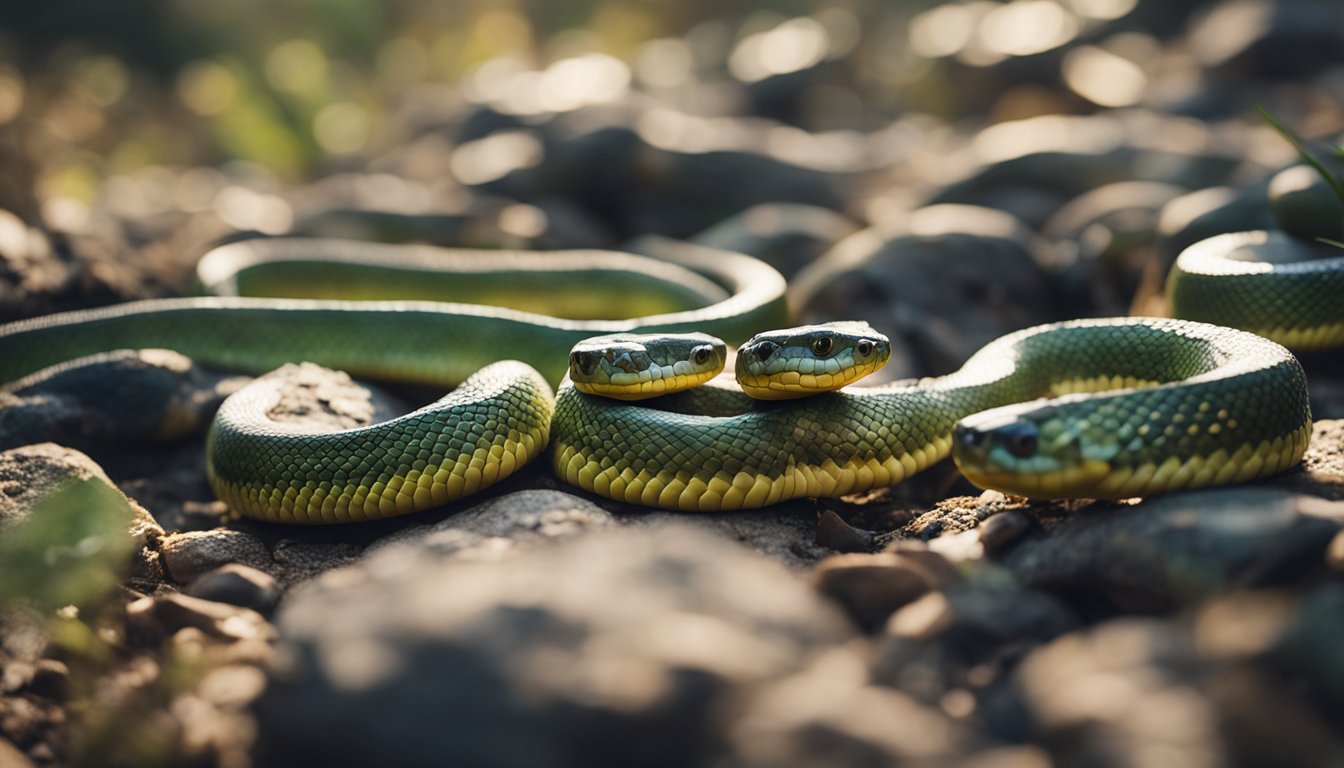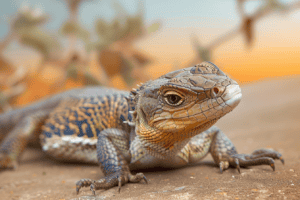Snakes may slither quietly on the ground, but they certainly make a lot of noise in the animal kingdom with their fascinating characteristics.
These creatures have an impressive variety that spans across different colors, sizes, and habitats.
From the driest deserts to the most humid rainforests, snakes have adapted to survive in various environments.
They are often misunderstood, surrounded by myths and fears, but a closer look reveals an incredible and important part of our natural world.
Children are naturally curious about these reptiles that seem to glide effortlessly without legs.
Snakes are known for their unique way of moving, their ability to swallow food much larger than their heads, and sometimes even for their dangerous venom.
But these features barely scratch the surface of what makes snakes truly remarkable.
Did you know that some snakes can see using heat, or that the smallest snake could curl up comfortably on a quarter?
Learning about snakes opens up a world of biological wonders and oddities.
For instance, certain snakes have a sixth sense that allows them to detect the faintest vibrations in the ground, letting them “hear” approaching prey or predators.
And let’s not forget about snake skin, which is not slimy as often thought, but rather smooth and dry to the touch.
These cold-blooded creatures lead intriguing lives, playing critical roles in many ecosystems around the globe.
What Are Snakes?
Snakes are astonishing creatures that slither their way through diverse habitats across the globe.
They are known for their legless form and unique adaptations that make them fascinating subjects of study.
Diverse Species Around the Globe
With over 3,000 species, snakes have conquered environments from steamy rainforests to expansive deserts.
They range in size from the tiny, 10-centimeter-long Barbados threadsnake to the massive 7-meter-long anaconda.
The Scales That Shield
Snakes are covered in scales, which are made of keratin – the same material as human fingernails.
These scales protect them from injury, prevent dehydration, and even help them move by providing traction against the ground.
Each species has a distinct pattern that aids in camouflage or warning potential predators.
Cold-Blooded Mysteries
As cold-blooded reptiles, snakes depend on their surroundings to regulate their body temperature.
Unlike mammals, they can’t generate their own heat, so sunbathing on a rock or hiding in the shade are ways they manage their body warmth.
This cold-blooded nature leads to remarkable survival strategies, especially in extreme temperatures.
The Snake’s Life Cycle
Snakes have a captivating journey from the moment they’re born to becoming the serpentine wonders we often see slithering in the wild.
This life cycle is brimming with fascinating transformations and survival strategies.
From Egg to Serpent
Most snakes begin their lives in eggs, though some species give birth to live young.
Eggs are laid in hidden, safe places like under leaves or within the sand, and they rely on the warmth of the surroundings to incubate.
When it’s time, the hatchlings use a special tooth to break through the eggshell, already equipped to slither and hunt for small prey.
Unlike human babies, these little serpents are independent from birth, setting off on their own remarkable adventures without any parental guidance.
Surviving the Wild: Growth and Survival
After hatching, a snake’s primary focus is growth and avoiding predators. Snakes grow by shedding their skin, a process known as ecdysis.
Young snakes may shed more frequently, as often as once a month, whereas adult snakes may only shed a few times a year.
Survival is a mix of instinctual hiding, cunning stealth, and sometimes just sheer luck.
They learn to hunt using their species-specific adaptations like heat-sensing pits, venom, or constricting powers to secure a meal.
With each successful hunt and shed, they grow, paving their way to become the fascinating adult snakes that might just be hiding in a garden or forest nearby!
Sensational Senses and Survival Skills
Snakes are unbelievably cool! They have superpowers like heat vision and can dance to avoid danger!
Let’s zoom in and see how these slinky friends hunt and stay safe.
Hunting Techniques
Snakes are masters at catching their lunch. They use their flickering tongues to smell the air.
Picture this: their tongue is like a radar, picking up scent particles floating around.
Once they lock on to the smell, they track their prey with incredible accuracy. Some snakes come with built-in heat sensors.
They can see a warm mouse as clearly as you see a bright star on a dark night.
These heat sensors help them hunt in complete darkness—how awesome is that?
Avoiding Predators
Staying off the dinner menu for other animals is tough work for our snake pals. But they’ve got tricks up their scales!
They can play the ultimate game of hide and seek by blending into their surroundings. Imagine a green snake in the grass; it becomes nearly invisible.
Some can even burrow into the ground, disappearing from sight! And if they’re spotted, they don’t just give up.
Some snakes flatten their heads or hiss menacingly to look scary, while others play dead.
They might even let off a stinky smell to say, “I’m not a tasty snake-snack!” It’s all about survival, and snakes are excellent at the game.
Human and Snake Interactions
Humans and snakes have a fascinating and complex relationship.
From revered ancient symbols to misunderstood reptiles, these creatures captivate our attention.
Now, let’s unravel some truth from tales and see how snakes slide into our lives.
Myths and Misconceptions
Throughout history, snakes have often been misunderstood.
Many people think that all snakes are dangerous, but actually, out of the roughly 3,000 snake species, only about 600 are venomous.
They’re often seen as menacing creatures in stories, yet only attack when threatened.
Conservation Efforts
Snakes play a pivotal role in ecosystems by controlling pest populations.
Recognizing their significance, conservation groups work tirelessly to protect snake habitats.
For example, the hognose snake, with its upturned nose used for digging, is often conserved for its role in pest control and thus, agriculture.
Snakes in Pop Culture
Snakes slither onto our screens and pages, often symbolizing wisdom or treachery.
Think of the cunning serpent in the animated classic ‘The Jungle Book’ or the noble house of Slytherin in the ‘Harry Potter’ series.
Their presence in pop culture can distort our view of snakes, but can also make them more familiar and less feared.
Frequently Asked Questions
Let’s unravel some mysteries about these amazing reptiles together. You might be surprised at what you learn about snakes.
How can snakes ‘see’ in the dark?
Snakes have an incredible ability to sense heat through special organs called pit organs, which are located between their eyes and nostrils.
With these, they can detect the warmth of prey in complete darkness, giving them a night vision superpower.
Are there any snakes that can fly?
While snakes can’t fly like birds, the paradise tree snake from Southeast Asia can glide through the air.
They flatten their bodies and slither through the air from tree to tree, which might look like flying at first glance.
Why don’t snakes have legs, and how do they move?
Long ago, some ancient snakes had tiny legs, but through time, they evolved to live without them.
Snakes slither by using their powerful muscles and scales to grip the ground, moving in a side-to-side motion called lateral undulation.
This unique movement allows them to glide smoothly over the earth.
What’s the most unusual thing a snake can eat?
Some snakes have jaw-dropping eating habits—like the African egg-eating snake that swallows eggs whole and then cracks them inside its throat!
These specialized snakes have pointy vertebrates inside their neck to help break the shell and then they spit out the pieces.
How do snakes use their tongues to understand their surroundings?
A snake’s forked tongue is a fantastic tool for exploring!
They flick it out to catch scent particles from the air, then touch it to the roof of their mouth where a special organ called the Jacobson’s organ analyzes the scents.
This helps them locate dinner or avoid becoming dinner themselves.
What are the survival superpowers of snakes?
Snakes have an arsenal of survival abilities.
Their scales protect them, they can swim, burrow, climb, and some even have venom that can be used for defense or to immobilize prey.
Every kind of snake has its own set of superpowers that help it thrive in its specific habitat.









